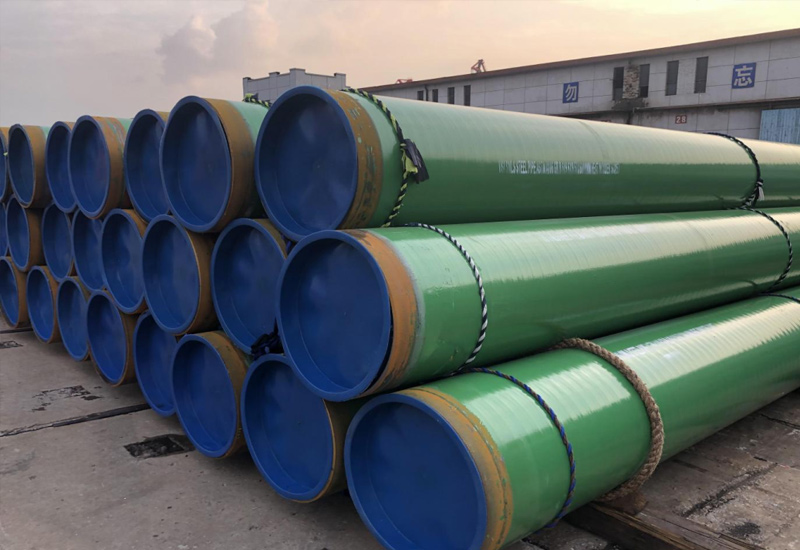HOT BLOG TAGS
AS/NZS 1579
Technical Overview: AS/NZS 1579 – Arc-Welded Steel Pipes and Fittings for Water and Wastewater
1. Definition and Scope
Standard: AS/NZS 1579 (latest edition: AS 1579:2001) specifies requirements for arc-welded steel pipes and fittings with butt welds, used in water supply, wastewater systems, and piling applications.
Applications:
Pressurized water/wastewater transport (up to 6.8 MPa).
Structural piling (e.g., foundation support).
Product Range: Pipes with nominal diameters ≥ DN 100 mm (4 inches).
2. Key Requirements
Dimensions and Tolerances
Diameter: DN 100 mm and above. Exact size ranges are tabulated in the standard (e.g., DN 100–DN 3000+).
Wall Thickness: Varies by pressure class; minimum thickness defined to withstand operational stresses.
Tolerances (typical examples, based on industry norms):
| Parameter | Tolerance |
| Outside Diameter (OD) | ±1.0% of nominal OD (min. ±0.5 mm)3 |
| Wall Thickness | ±10% of nominal thickness3 |
| Straightness | ≤0.2% of pipe length |
| Length | +0/+150 mm for cut lengths1 |
3. Material and Performance Grades
Steel Grades: Not explicitly detailed in search results, but typical grades include AS/NZS 3678 (e.g., Grade 250, 350) for weldability and corrosion resistance.
Mechanical Properties (representative values):
| Property | Minimum Requirement |
| Yield Strength | 250–350 MPa (varies by grade) |
| Tensile Strength | 410–480 MPa |
| Elongation | ≥20% (ensures ductility under pressure) |
Chemical Composition:
Limits for Carbon (C), Manganese (Mn), Sulfur (S), Phosphorus (P) to ensure weld integrity and corrosion resistance (e.g., S ≤ 0.03%, P ≤ 0.03%).
Testing and Inspection
Compulsory inspection for quality and safety:
Hydrostatic Test:
Each pipe was tested at ≥1.5x design pressure (minimum). 10.2 and 6.8 MPa systems).
Duration: ≥5 seconds without leakage.
Non-Destructive Testing (NDT):
Radiographic/ultrasonic testing in case of welds for crack/imperfections1.
Dimensional Checks:
OD, wall thickness, straightness, and length confirmed to within tolerances.
Visual Inspection:
Possible surface imperfections (e.g. Cracks, undercuts) shall meet the acceptance standards.
4. Ancillary Requirements
Linings/Coatings: Optional cement mortar lining per AS 1281 for corrosion protection.
Fittings: Must match pipe material and pressure ratings (e.g., elbows, reducers).
Marking: Each pipe marked with:
Standard number (AS 1579:2001).
Manufacturer ID.
Size (DN), pressure rating, and heat number.
5. Evolution and Current Status
Versions:
1973: Covered water/gas pipelines.
1993: Expanded to wastewater and piling.
2001 (Revision): Unified specimen and test procedures and reference standards such as AS 1199 (sampling) and AS 1646 (seals).
Superseding Status: AS 1579:2001 is active and replaces all older versions.
Importance in Infrastructure
Guarantees a durable performance under high pressure (for example, municipal water systems).
Leads to standardized connection between pipes/fittings at different projects.
Essential for hazardous locations (i.e., wastewater with H2S gas)
6. Conclusion
AS/NZS 1579:2001 is the standard that defines their acceptance for arc-welded steel pipes in Australian and New Zealand water/wastewater industry. It requires strict material, dimension and testing stipulations to guarantee that the product is suitable for use in high pressure systems. The standard provides the metal tolerances, core tolerances are included (ID ±1 mm, OD ±1%, wall thickness ±10-12%, but overall toleramces are precise on mechanical/chemical aspect only including skin pass rolling, but filled party may vary (supported by referenced material standards such as AS/NZS 3678). Engineers need to comply with its compliance & safety.
Related Products
Share:
HOT TAGS
latest posts
- 3LPE coated steel pipe: a solid barrier in the field of industrial corrosion protection
- Breakthrough of spiral welded pipe technology: How does SSAW steel pipe conquer the water supply project in rugged mountain areas of South America?
- What is offshore pipeline and its Applications in offshore oil and gas development
- 3PP Coating for High-Temp Pipe Corrosion | Case Study
- A Guide to ISO 21809: 3LPE & FBE Pipe Coating Standards








